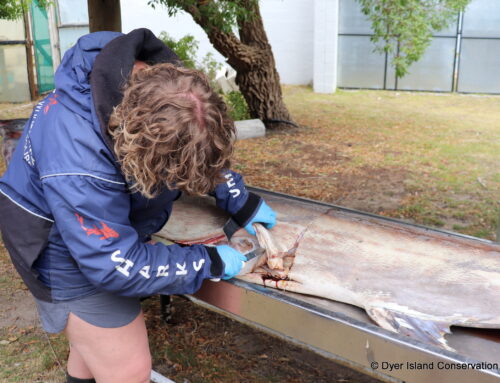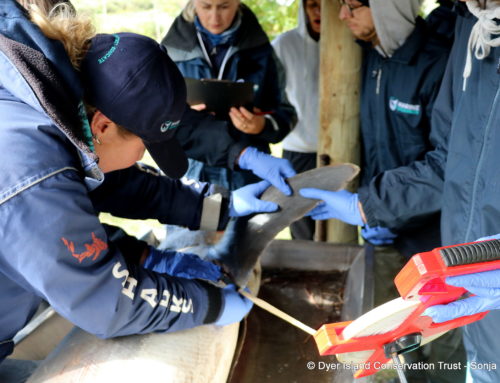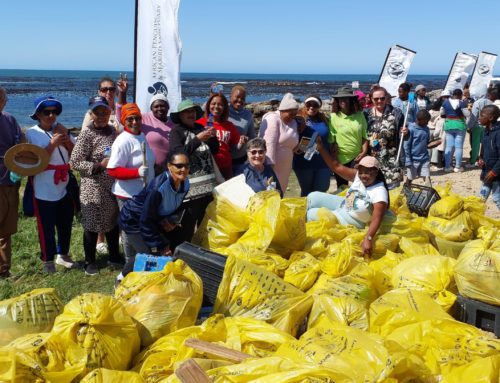Dead shark dissection results
August 05, 2012 by dyertrust

On 2 August 2012, the DEA and DICT met in Cape Town to conduct an autopsy on the deceased shark. The male measured 3.8 meters in length and weighed 507kg with a protruding abdominal cavity. Upon dissection, six Cape fur seals were removed from the stomach as well as three Cape fur seal skulls. Three of the six seals were 2-5 year old juveniles while the other three were young of the year pups. The six seals were at the same stage of digestion, suggesting they had been eaten within the same amount of time.
When the seals were removed and pieced back together you could see exactly how that shark killed them, Michelle Wcisel, DICT zoologist said. The three older seals were all split right in the middle, it looked like a missile had cut them into two, and the three small seals were swallowed whole. Michelles research focuses on white shark predation on Cape fur seals.
As much as you never want to see a dead white shark, it is at the same time incredible to be able to examine such an animal up close, said DICT marine biologist Alison Towner.
Mysteriously, there are still no clues as to what killed the shark. All organs were plump and healthy, including the liver, which is often the first organ to show signs of degradation with any sort of sickness or weakness. There was no damage in the gills or mouth area and the parasite load on the shark was normal. Blood samples have been collected and will be screened for toxicology or possible illnesses.
These dissections are so important for our understanding of these animals. For example, there has been a lot of debate on whether or not large sharks that are lifted from the water sustain internal organ damage from gravity. Here is a case of a 507kg animal out of the water for over 24 hours that did not sustain any internal organ damage, said Michelle.
Many parts of the shark will be sent to researchers across the country working on various aspects of shark biology. Some of these topics include sperm samples for maturity, blood samples for toxicology and genetics, skin samples for genetics and isotope studies, as well as various parasite samples.
The Dyer Island Conservation Trust would like to thank the Department of Environmental Affairs for hosting the dissection.




